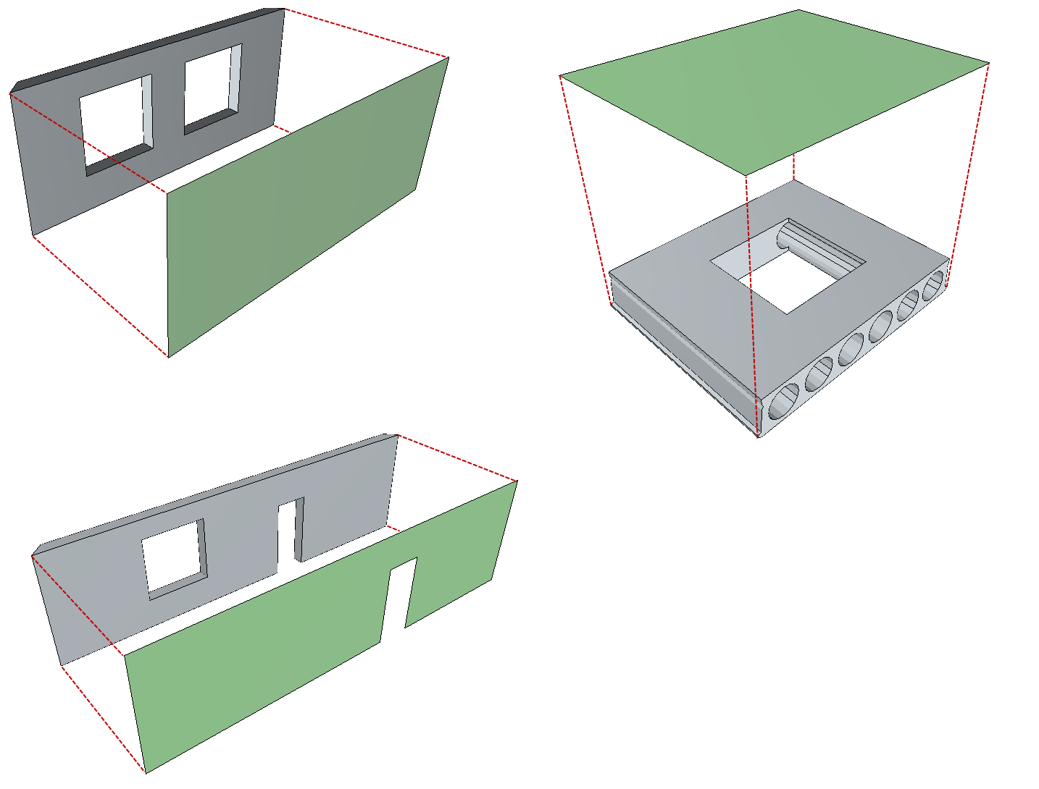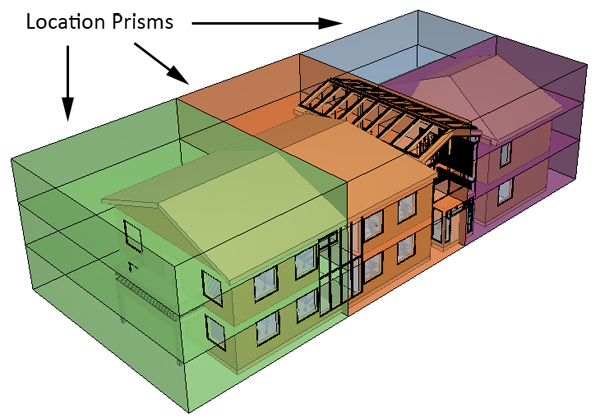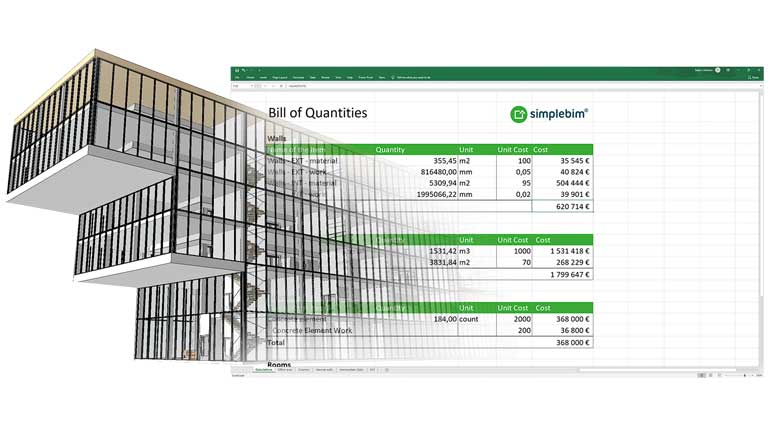08. QTO
This page may include version-specific information that is no longer current.
The warning is added automatically and may appear on pages containing version-neutral or up-to-date information.
Simplebim is a great solution for calculating quantities from IFC/BIM models. When you calculate quantities from a model you always follow this simple process:
- Which objects? From all the objects in the model, which objects do you want to calculate?
- For all the objects you want to calculate you need to figure out
- What? Classify / group the objects from the viewpoint of your calculation
- How much? What is the total quantity for each of the groups?
- Where? Where are the objects located, like building storeys, construction sections, apartments or concrete pours?
Which objects?
Models typically contain objects that you don’t need. Because of this the first task is to create a selection that contains the objects you are interested in. You may be interested in only certain kinds of objects, like walls or rooms, or objects in certain locations, like in one building storey or in everything done by a subcontractor. Whatever your need is, you can easily make the correct selection using Simplebim’s intuitive selection tools. You can learn all about making selections in Simplebim here.
If you want a very clean start for your calculation, you can export your selection into a new IFC file. This way there will be no confusion, because you know that you need to calculate everything you have in this new model.
What?
Once you have selected the objects you are interested you need to dig deeper into those objects. You need to classify / group those objects based on how you want to calculate them. If you calculate walls you will for certain have different kinds of walls. The same applies to rooms, doors, windows… everything. You will again use the same selection tools in Simplebim for grouping your objects.
Simplebim has powerful tools for ensuring that you calculate everything, but everything only once. You can use ‘Ungrouped Groups’ to capture all the objects that have not been grouped yet and ‘Non-Overlapping Groups’ to ensure that each objects can be found in only one group.
How much?
All the objects you calculate must have a quantity; a count, length, area, volume, weight etc. You can often find such quantities in IFC models, but how can you trust them? How do you know what rules were used in the calculation and how reliable the ‘calculation engine’ was? With Simplebim you can calculate consistent and reliable quantities from the object’s geometry using the Calculate Basic Quantities -tool.

Where?
In construction everything happens in a location, so your quantities must also be organized by location. IFC typically only contains a division of objects into building storeys, but even the building storeys might not be like you need them. Does for example a floor slab belong to the storey below or above and what about walls that are multiple storeys high? In Simplebim you can easily re-assign objects to building storeys to get exactly the division you need.
However, building storeys are just the beginning. What about construction sections, apartments, concrete pours etc. In Simplebim you can use the powerful Location Editor with 3D Location Prisms to slice and dice your models into any locations and even combination of locations you want. When an object, like foundation slab, spans multiple locations, like concrete pours, you can split such objects into location specific parts. Combine this with the quantity calculation capabilities and you get new and accurate quantities for each part. You can find further information here and in these useful, practical videos.

Final thoughts
This is all fine, but what do you do with this data, how do you actually calculate the quantities? In Simplebim you have two great options: you can either calculate your quantities inside Simplebim using Bimsheet or the Table palette, or you can export a new IFC file with all the classification, quantity and location information you just created in Simplebim – and use that new IFC file in any IFC capable quantity calculation solution. This is true OpenBIM interoperability!
Bimsheet is basically Excel inside Simplebim. You drag and drop objects from your model into Bimsheet, select which properties you want to see and use Excel formulas for your calculations. You can find a great introduction to Bimsheet here and there are additional tutorial videos, for example here and in this list.
If you have an existing Excel that you currently use for your calculations you can connect it to Bimsheet. Instead of tipping in quantities manually you get the same quantities from your model. But after that, your calculation works just like it always has. With the added benefit, that you can visualize your existing calculation using the 3D model!
If you already have a IFC capable quantity take-off, cost estimating solution you will be amazed how much better an IFC model that has gone through the Simplebim process works, compared with the original IFC model. With Simplebim you can normalize the models such that the data is always relevant and reliable – and the calculators are never confronted with the inherent inconsistencies of the IFC models produces by designers.
Once your have set up and tested your Simplebim enabled quantity take-off process you can start automating and scaling it up to your whole organization. In Simplebim this is done using templates and scripts. Here are a few case-studies of companies that have really scaled the Simplebim capabilities using automation.
– Bylor, UK: 30 000 concrete pours with a total of 50 million reinforcement bars.
– SRV, Finland: 700+ IFC models processed automatically with Simplebim each month
– NCC, Scandinavia: 120 concurrent projects where each IFC model is normalized automatically by Simplebim every night.
